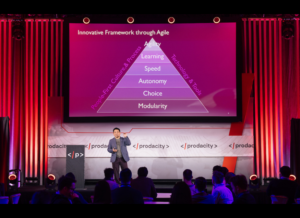To keep up with the current state of IT modernization, more and more federal agencies are turning to microservices to help them innovate faster and create a better end-user experience. Microservices are a development architecture that breaks down applications into their core functions, or services, allowing each to be deployed independently. The utilization of microservices has traditionally been applied alongside DevOps to allow for more simultaneous development and faster, more efficient deployment of upgrades and new features.
By utilizing microservices, agencies can update code more easily without impacting other applications. And while many agencies continue to turn to microservices because of their efficiencies, perhaps the most significant shift in the development process is a cultural one. After all, this is where DevOps comes into play, which embodies a culture of openness and collaboration. To reap the full benefits of microservices, we have put together some best practices for federal IT pros to follow. Here they are:
- Shift from a traditional monitoring mindset to one of observability. The high number of moving pieces and additional services created by microservices can add significant complexity to an agency’s IT environment and among teams. While continuous monitoring throughout the application development process is still essential, agencies cannot gain precise insights into their infrastructure without an observability solution. Observability solutions combine network, cloud, system, application, services, and database metrics into a single source of truth, so users can investigate performance analytics at a deeper level and uncover where issues may be occurring.
- Consider a mesh architecture, and ensure it aligns with your container infrastructure. Once you start running more than ten microservices at a time, a service mesh architecture is recommended, as it provides policy-based networking and describes the behavior of the network in the face of constantly changing conditions. Service mesh architecture uses sidecar proxies to help IT security and observability efforts keep up with the complex connections between distributed apps. With a mesh architecture, DevOps teams can get quick metrics, logs, and tracing without making application code changes.
- When deciding which service mesh to leverage, look to your agency’s infrastructure and deployment use cases to help inform your choice. For example, some infrastructures work well with Kubernetes® or Docker, but specific use cases may require a highly-capable service mesh like Istio or more straightforward tooling like Linkerd 2.0.

- Build an understanding of the network’s criticality. Understanding the criticality of each workload in your agency’s IT portfolio is the first step toward establishing mutual commitments to cloud management. Some applications are mission-critical and must not fail. Others may go months without being used. While poor performance or outages for those lesser-used workloads is not desirable, the impact is isolated and limited with microservices. Federal IT pros should create scales for each application to determine the effort required to meet certain levels of criticality. Starting development with the proper observability framework and using a cloud-native approach to design scalable, independently delivered microservices can be hugely beneficial, especially when considering mission-critical activities.
Microservices can provide many benefits to agencies, particularly when applied alongside DevOps. But to reap the benefits, agencies need to take an intelligent approach to implementation and ensure they have taken steps to incorporate observability to monitor and secure their IT environments effectively.
For a deeper dive on SolarWinds® Hybrid Cloud Observability offering and how it can help agencies gain end-to-end IT operations visibility, click here.







